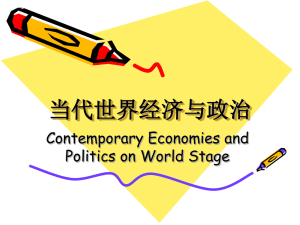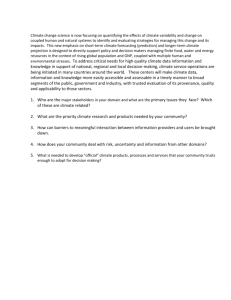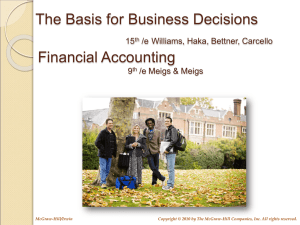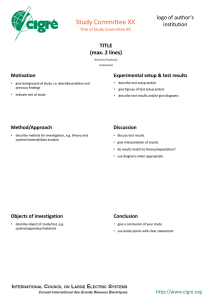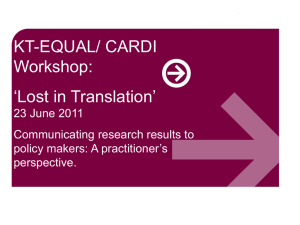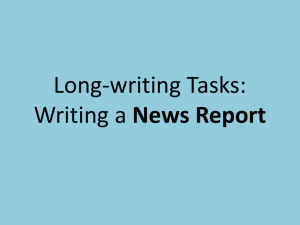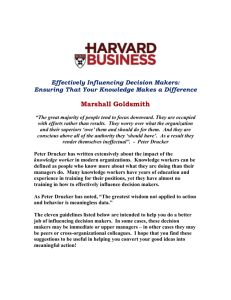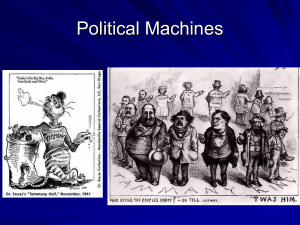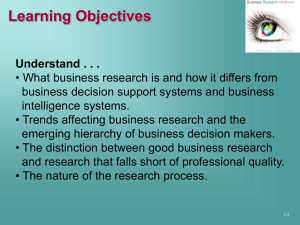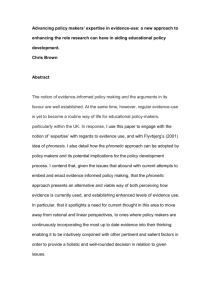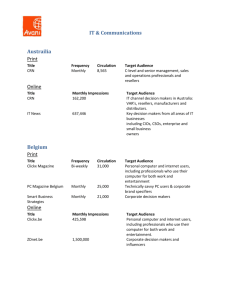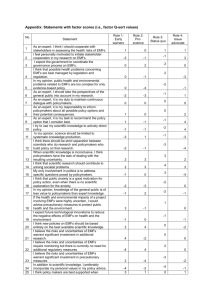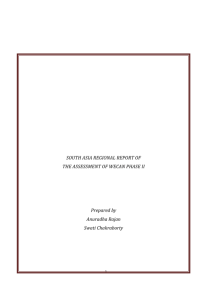Teaching statistics to meet the needs of policy makers
advertisement
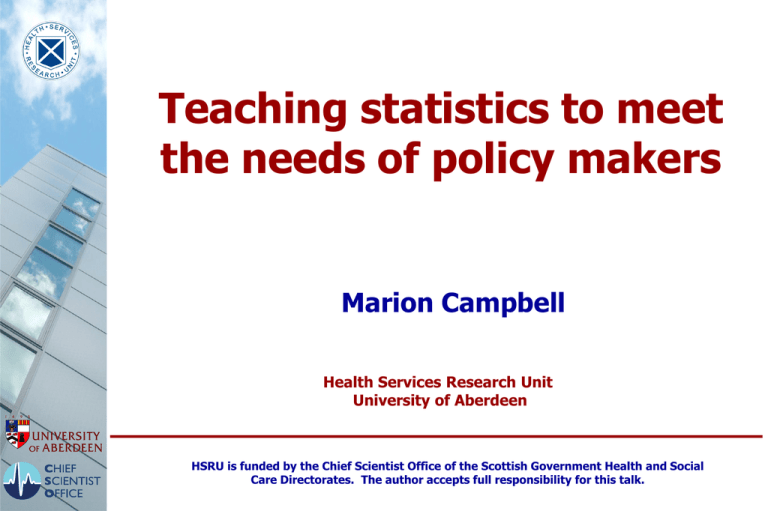
Teaching statistics to meet the needs of policy makers Marion Campbell Health Services Research Unit University of Aberdeen HSRU is funded by the Chief Scientist Office of the Scottish Government Health and Social Care Directorates. The author accepts full responsibility for this talk. Background • • • • Teaching statistics is a means to an end The end aim … • to interpret data accurately and meaningfully to make inferences about the greater population Often the end user is a decision-maker – who has to make decisions on behalf of themselves/wider population As such … in addition to teaching the skills of doing statistics, we need to teach the skills of communicating statistics Health Services Research Unit Who are the ‘decision makers’? Policy makers Public & patients Health service managers Clinicians & health professionals Health Services Research Unit Policy makers • Macro-level questions • What types of services should be provided in the NHS? • Should the NHS fund particular types of drugs/treatments? • … what would be the impact of those decisions on the health & wealth of the nation? • Societal perspective Health Services Research Unit Health service managers Issues of … • Local priorities and needs • Cost-effectiveness of specific healthcare treatments • How should services be delivered locally? • How can the organisation be most efficient? Health Services Research Unit Health professionals • Questions about clinical effectiveness … • Which treatments have the best outcomes for my patients? • Eg Which procedure is better for knee replacement? Health Services Research Unit Patients • Questions about the patient journey & treatment choices … • How long should I expect my recovery to take? • What are the risks to undertaking different treatments? Health Services Research Unit Communicating with policy makers • • • • • • Policy makers and scientists (incl statisticians) are different Policy makers have a different agenda They have many conflicting sources of advice They are non-specialists They are busy They have different timescales Health Services Research Unit Differences: academia and policy / Source: http://blogs.lse.ac.uk/impactofsocialsciences/2014/02/11/policy-world-versus-academia Health Services Research Unit The concept of evidence ● Differs between academics and policymakers ● Academics: − ‘evidence’ = academic research findings, RCTs, novel methods ● Policy-makers: often use and value other types of evidence: − public opinion, − political feasibility − knowledge of local contexts Health Services Research Unit Engaging policy makers Research evidence is most likely to be used by policy-makers when it meets the following needs: ● Relevant - addresses questions of interest to policy-makers ● Accessible - can be easily found and understood by policymakers ● Immediate - evidence is provided in a timely manner for current problems ● Useful - information provides solutions to problems ● Quality - information is credible and scientifically rigorous ● Collaborative - early and sustained engagement with policymakers will increase their understanding of the research and their confidence in using it ● Targeted - identifies a specific audience and key messages Health Services Research Unit The John Lavis model Full text Paragraph Headline: • Short & catchy • Retain essence of overall message Sentence Headline Sentence (have 2 versions): 1. Highlight the research evidence 2. Highlight the implications for policy Paragraph: • Why is the issue important? • What does the research tell us about the issue? • To what extent does current decision-making differ from optimal decision-making? • Who should act and what should be done? Headline Full report: • Expand on paragraph points • Full references The 1:3:25 model 1 page One pager: • Main messages • The “so what” not just the “what” 3 page Three pager: • Condensed version of findings • More like newspaper rather than academic abstract 25 page Headline Headline 25 pager: • Plain language • Anecdotes to convey messages • Cover 7 categories Seven sections for 25 pager • • • • • • • Context Implications Approach Results Additional resources Further research References & bibliography Health Services Research Unit So what else helps? • • • • Foster relationship with key policy makers to understand their needs – then target message Delivery should be in interactive forum if possible Focus on implications rather than information Policymaker more likely to act on research evidence if packaged as an actionable message Health Services Research Unit Words of wisdom “Lay the fundamentals bare, make the logic clear and get rid of the jargon” UK Government Scientific Adviser, Sir Mark Walport Health Services Research Unit A rallying call! • Speak up! − • Stand up! − • Communicate your science. If you don’t, it’s as good as non-existent. Making science just for yourself does little good. Make yourself heard. Meet people. Introduce them to yourself and the work you do. Be proud of achievements. Modesty in moderation! Gang up! − Consensus is important. Even if it exists at moderate levels, build on it. It makes the scientist’ voice stronger in the eyes of the outside community. Anne Glover Chief Scientific Adviser to the EU Health Services Research Unit Useful references • www.researchtopolicy.ca • Canadian Institute for Health Information. You say ‘to-may-to(e)’ and I say ‘to-mahto(e)’” Bridging the Communications Gap Between Researchers and Policy-Makers. CIHI, 2004 • Canadian Health Services Research Foundation. “Reader-Friendly Writing—1:3:25,” Communication Notes (2001) ww.chsrf.ca/knowledge_transfer/pdf/cn-1325_e.pdf • Food and Agriculture Organisation of the UN. Communicating with policymakers Presenting information to policymakers. www.fao.org Health Services Research Unit Contact details Marion Campbell, HSRU, University of Aberdeen m.k.campbell@abdn.ac.uk @MarionKCampbell Health Services Research Unit

